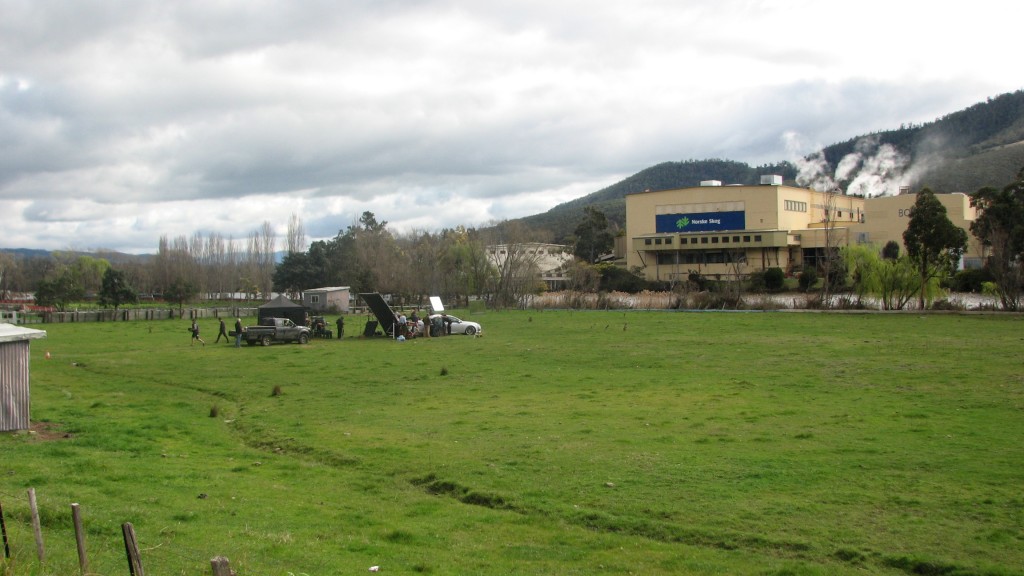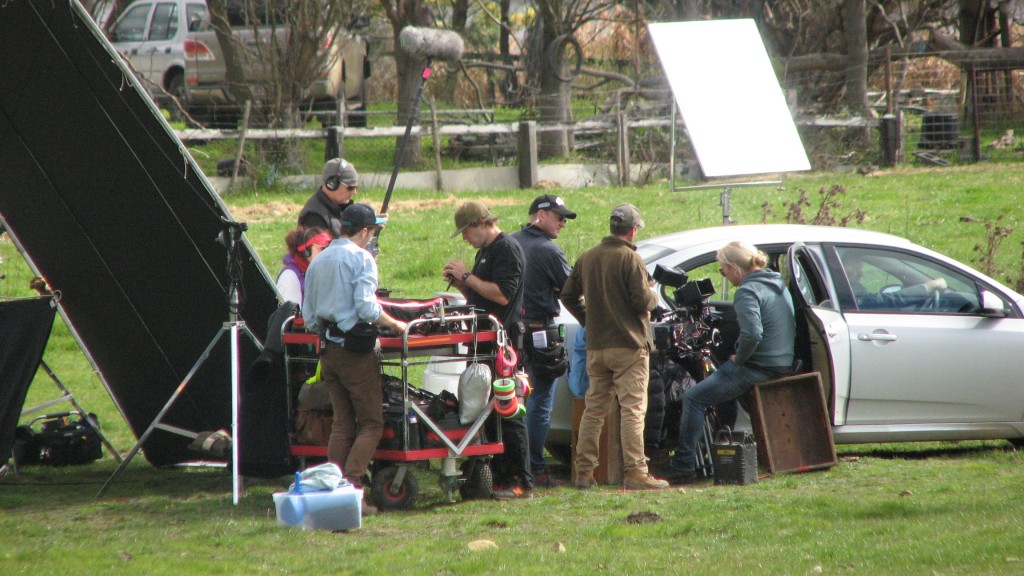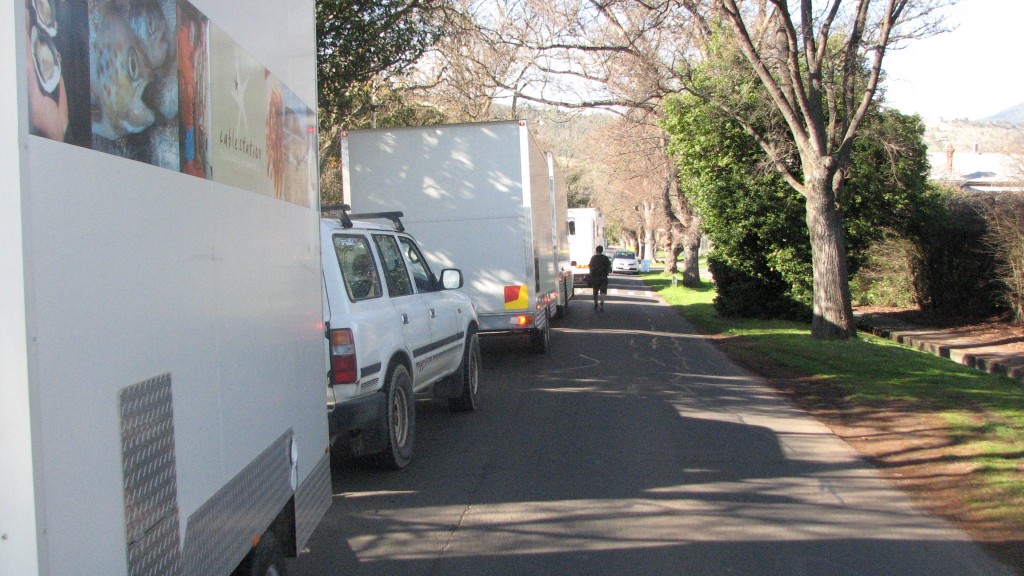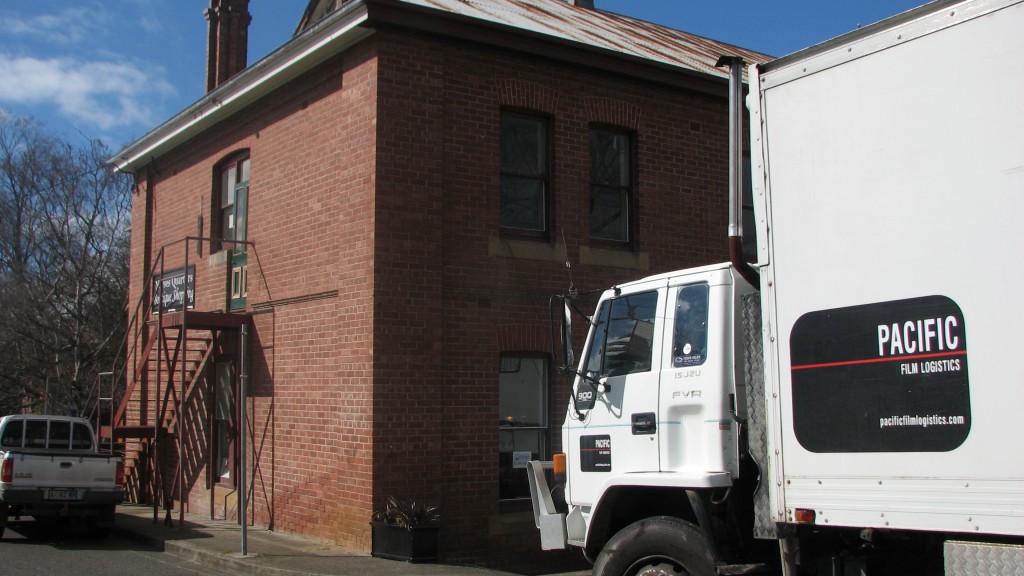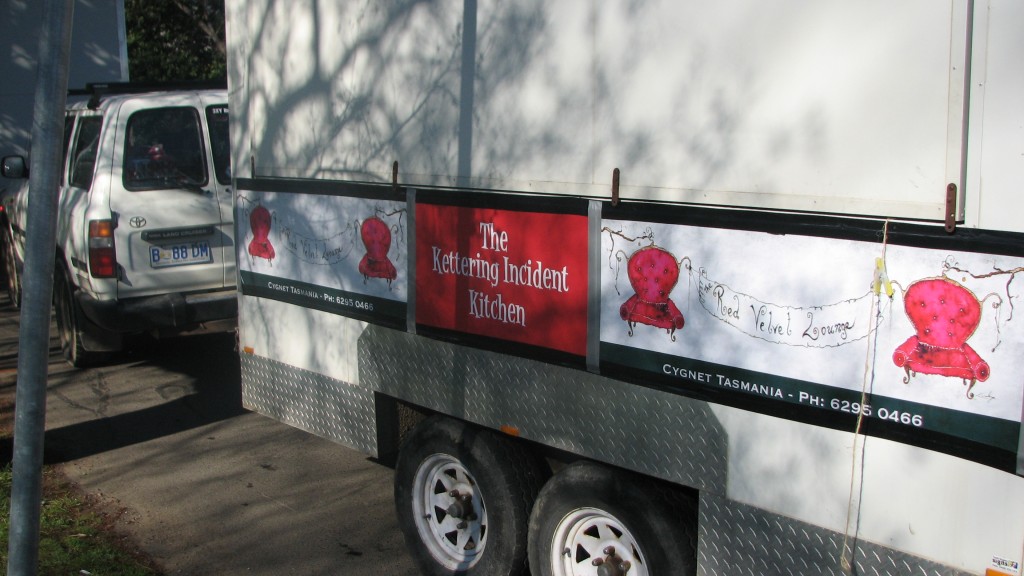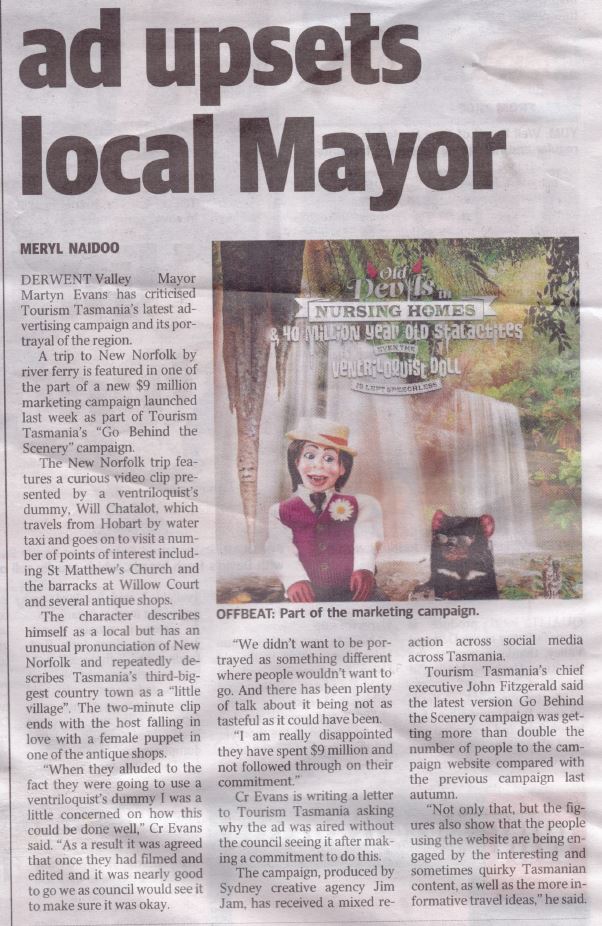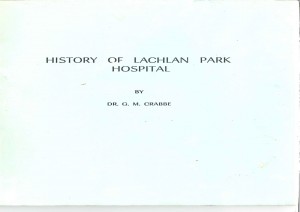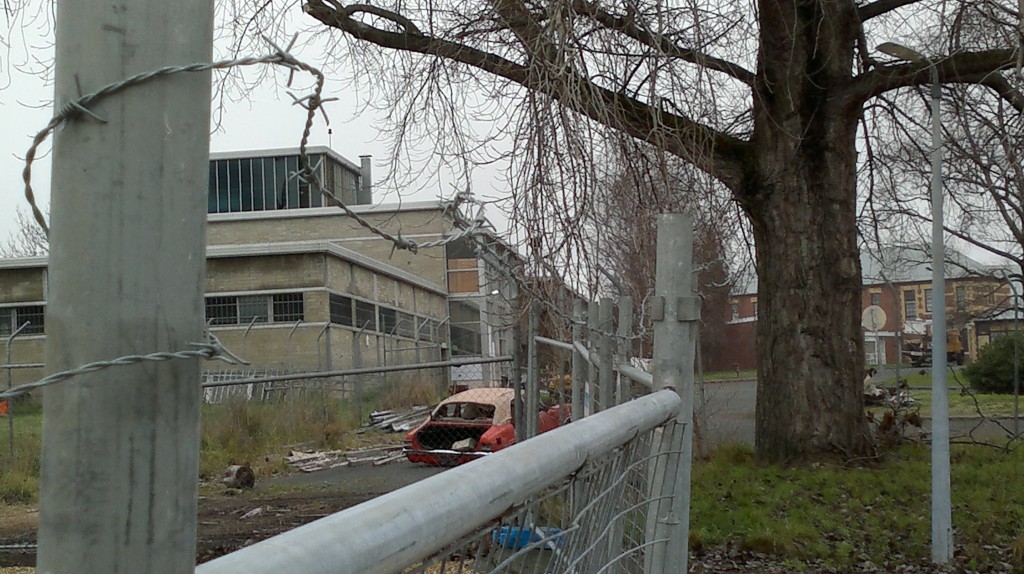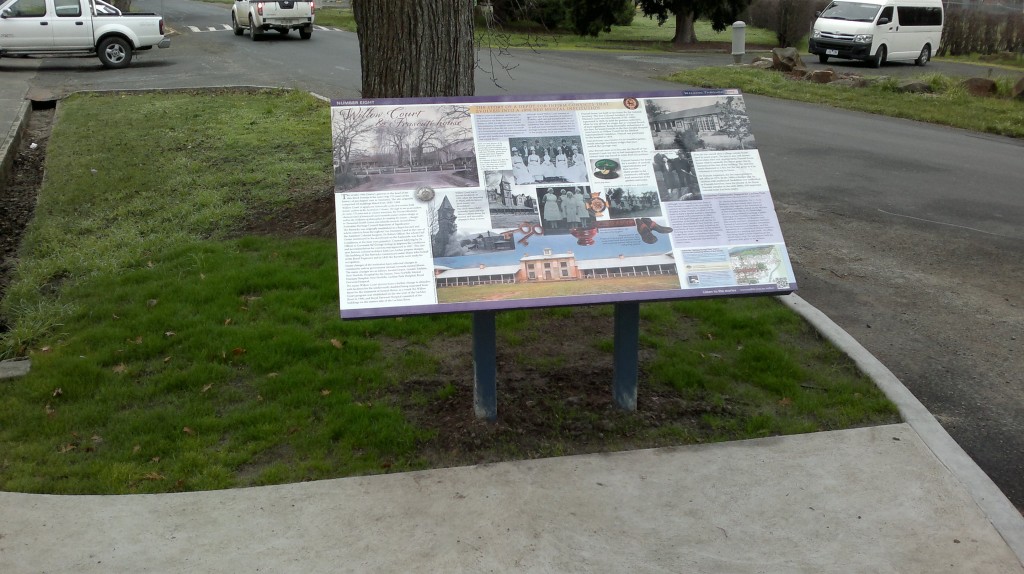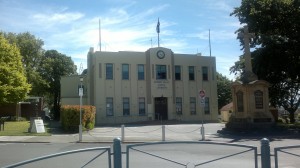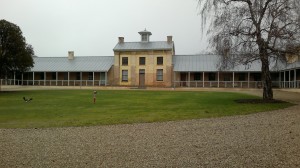A working bee by the Friends of Willow Court Committee, yesterday applied a second coat of special heritage approved paint and a first coat of a sandstone coloured finish to the concrete wall below the fence at the town entrance to Willow Court. Planned works to finish the job were delayed because of ill health to the heritage restoration expert, Mr Rod Quarrel, but yesterday he supervised a small number of the Friends of Willow Court to continue this vital works in keeping the Derwent Valley’s heritage in a condition to be enjoyed for future generations. Many members of the public came to see the works, share their stories and thank the volunteers. The first visit was Councillor James Graham who stopped to talk to Ann Salt, Chair woman of the Friends of Willow Court committee and a candidate for the next Council elections to be held next month. The friends of Willow Court are seeking new members at the moment to assist in the up coming open days and events that are planned for the partly preserved heritage site. Another coat and days work is planned for the near future to complete the task. The missing gate will soon be replaced after recent repairs. The lost fence up rights bars have been replaced and fixed in place by a local blacksmith, employed by the Derwent Valley Council and are indistinguishable from the original bars. The large cast iron upright pillars absorbed the paint finish and when wet took on a gloss finish, but will settle to a faded black when fully dry. Special thanks go to the workers, Chris Salt, Ann Salt and Mark Krause, but the job wouldn’t have proceeded without the good health and dedication of Mr Rod Quarrel.
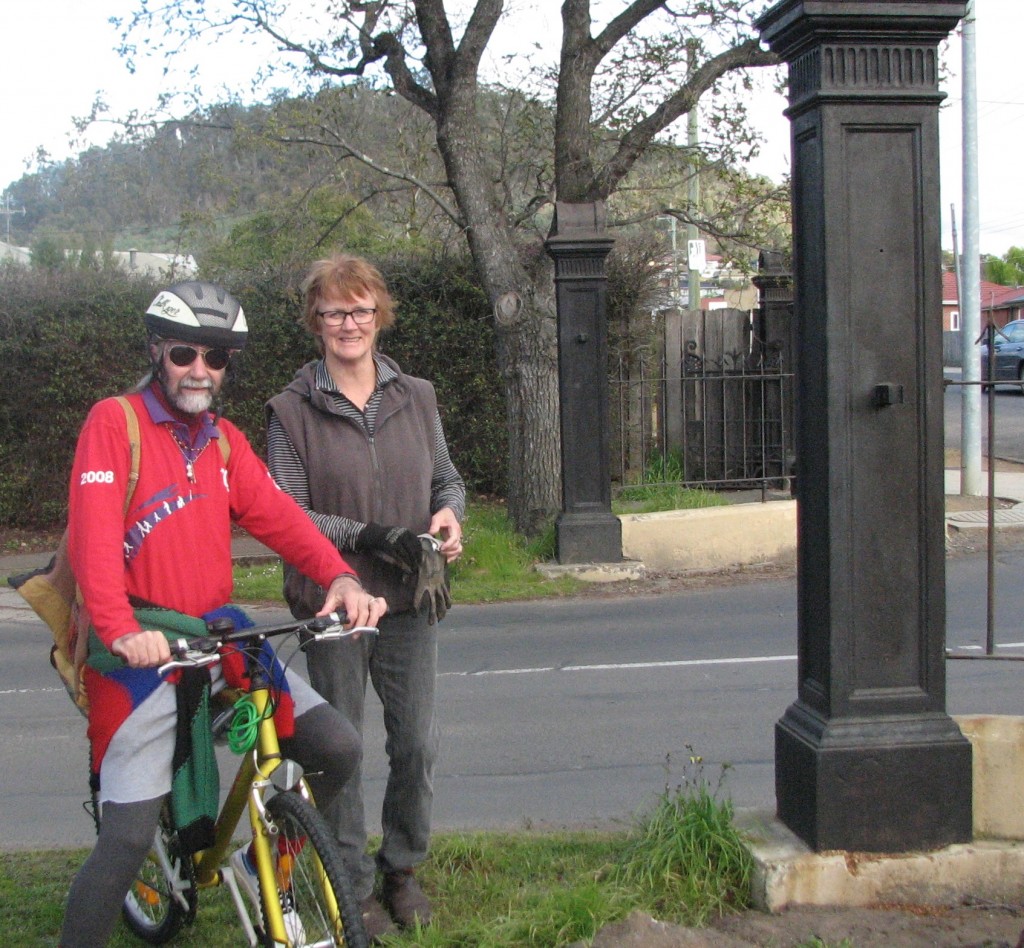
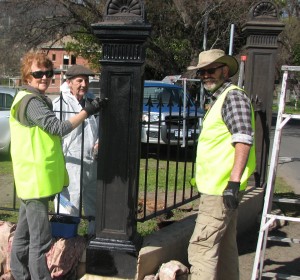
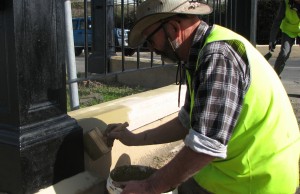
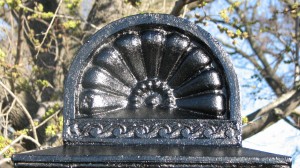
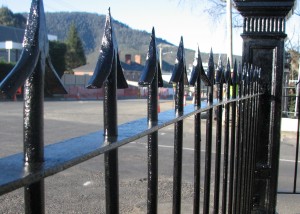
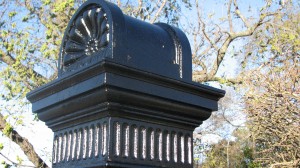
The case of the missing gate
Yesterday it was noticed that one of the gates to the avenue was missing and questions were asked to find where it had gone. After a short investigation it was found out that they had been removed for repair after being vandalised. This weekend the Friends of Willow Court will again be working on the front fence and remaining gate under the supervision of Rod Quarrall. Rod has been ill and the job was delayed, but we are glad to see him again this weekend. Stop by and say hello if you are in the area, Rod, like the Friends of Willow Court donates every minute of his time with this project and the conservation of Willow Court as it reaches the end of its first stage.
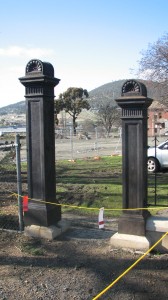
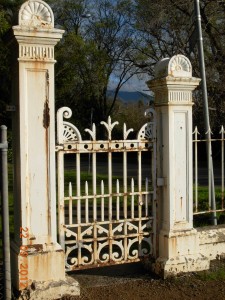
![]() Two large trees that were recorded in the Botanical Report have also been removed, one because it was rotten and posed a danger and will be replaced with the same species,
Two large trees that were recorded in the Botanical Report have also been removed, one because it was rotten and posed a danger and will be replaced with the same species,
the other one because it was in appropriately planted in the first place. The stumps will be removed.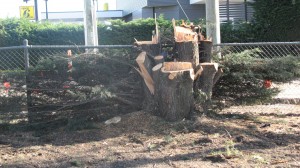
The Kettering Incident
Busy times in Willow Court and around New Norfolk today with the filming of The Kettering Incident. There are plans to film in the Willow Court Hotel and the Morgue. Today the crew filmed at Sorell Creek below and blocked the Avenue for a while trying to workout how to get all the trucks into the privately owned area of Willow Court. Catering service were set up behind the Nurses building. The filming is done by Foxtel and the BBC with one million dollars from the Tasmanian Government.
Mayor protecting the Derwent Valley Image
It is great to see the Mayor standing up for the image of New Norfolk and it’s people with this article from the Derwent Valley Gazette, we hope that this fastidious mind set will continue with the previous residents and staff from Willow Court.
A new promotion including a little bit of Willow Court.
A de-institutionalisation study from Willow Court from Respected Doctors
A Comprehensive Health Assessments During De-institutionalisation – An Observational Study: from respected Doctors, Nick Cooling and Nick Lennox. This study was done at Willow Court and highlights issues when monitoring the health needs of people with an intellectual disability.
“It is well known from other studies that sensory impairments are often unrecognised in both the institutional and community setting 24-28. The results of this study support this”.
This was collaborative study between Queensland Centre for Intellectual and Developmental Disability at the University of Queensland, the Southern Division of General Practice in Tasmania and Willow Court Centre in Tasmania.
Click here to view the full report, Health Study
The “Electrical Machine” found in the attic in the old Officer’s bedroom
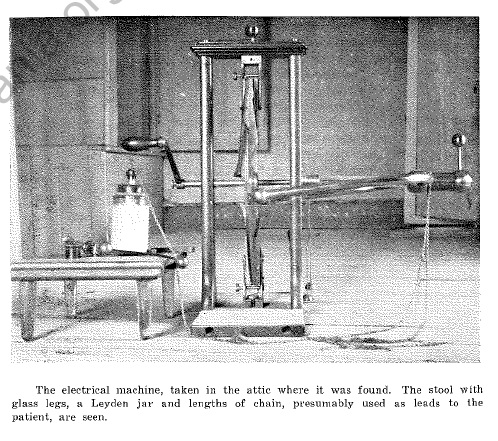 The “Electrical Machine” found in the attic in the old Officers bedroom is contained in the history of Lachlan Park book by Dr G.M Crabbe. This book is a review of file notes from the early to mid 1800’s and beyond. It is able to shine a light on treatments and practices within mental health services in early Tasmania. The extensive use of Convicts and ex-convicts as support staff appeared as a common practice and also an ongoing problem according to the book, “In contrast to this, those in charge did seem to have the patients interests at heart and did their best to care for them. They were very handicapped by having the hospital staffed by convicts and ex-convicts, the Medical Officers, Matron and Headkeeper being the only “Free”.
The “Electrical Machine” found in the attic in the old Officers bedroom is contained in the history of Lachlan Park book by Dr G.M Crabbe. This book is a review of file notes from the early to mid 1800’s and beyond. It is able to shine a light on treatments and practices within mental health services in early Tasmania. The extensive use of Convicts and ex-convicts as support staff appeared as a common practice and also an ongoing problem according to the book, “In contrast to this, those in charge did seem to have the patients interests at heart and did their best to care for them. They were very handicapped by having the hospital staffed by convicts and ex-convicts, the Medical Officers, Matron and Headkeeper being the only “Free”.
There is also a lot mentioned about Electricity being used as far back as 1851, “strong galvanic current” however a clear difference was the time that the electricity was used for a patient in that time and what would be used today with modern ECT. The Galvanic battery would be able to deliver long doses of electricity to the patient and there are clear records indicating that the use of the electricity was used verbally as a threat instead of a treatment. Reasons for long electrical treatment could be, not eating, being idle, being violent, refusal to work and delusions. Dr Grabbe also questions whether the electric shock or galvanic battery were also delivered through hip or foot baths, the file notes are unclear.
Treatments involving cold bath or shower, hip bath are also mentioned in the patient notes that Dr Crabbe reveals.
The treatments given were the usual ones in those days. Emetics and purgatives, especially on admission, were used frequently; heads were shaved; setons were inserted in the neck, great satisfaction being expressed when they discharged freely; heads were blistered; disturbed patients were given cold showers, which frequently did anything but quieten them; mercury was given in full doses, till a stomatitis was produced, but this was not considered an indication to discontinue the administration. Sedatives were not much favoured, the only one in use being opium, but in spite of its being effective, it was not used very often.
There is clear history of the Barrel tunnel being put in, to stop issues and complaints from downstream residents.
Dr Crabbe clearly had an interesting in the treatments used and proposed in the early history of Willow Court and a number of terms used throughout the book are clearly that of an educated medical practitioner with a keen sense of gathering this history before his own death, most of the research was done while he coped with his own health issues.
New fence approval from Heritage Tasmania
“The Project Manager advised that the fence has now received the go ahead from Heritage Tasmania, and will be installed shortly”. Minutes of the Willow Court Conservation Committee (June 2014).
We are looking forward to having the fence erected on the site and we remain keen to know the type of fence that will be installed. There is hope that the new fence will cover up some of the old cars and junk that has been allowed to be stored next to the Heritage Precinct on the neighbouring property. It is unclear what action the Derwent Valley Council can do to have this mess cleared up before the proposed opening in September. Often Council by-laws allow for health and safely issues to be rectified. It is unclear what action can be pursued about storing of old car bodies and an assortment of old building materials.
Moved sign to better location
The information sign on the corner of the Avenue and the entrance way to the Barracks has been relocated to it’s new site. This site is on the top side of the road closer to the entry and where there are newly added footpaths. The old site was in the grass on the slopes of the Lachlan River side of the entry way. This sign is also connected to the New Norfolk “Walking Through Time” Heritage Walking tours and audio podcasts. Find Podcast here.
With the new opening time proposed for September there is concern about where people who are visiting the site will park. The Friends of Frascati House have recently asked the Council to look into the issue of parking. With a lot of new activity there would be lots of new traffic issues along the Avenue. It is also unclear what long term plan the Derwent Valley Council have in place for the extra traffic congestion and disability parking as the “dirt to plate” project is expanding, Frascati house is restored, the old oval wards become residential accommodation with their own private parking and the community house continue with their activities.
New opening time proposed
The Derwent Valley Council have proposed new (revised) dates for the opening of the Heritage Precinct of Willow Court. After being informed about possible dates and then having them changed a number of times, it is great to see that the end of the current conservation works and the proposed times look like this may be it.
“It was generally agreed that an open day for the community to tour the Willow Court site be held in September 2014.”
“It was generally agreed that the official opening of the site be held in October 2014.”
Specialist to investigate tunnel in February 2015
Mayor Martyn Evans announces that there will be an investigation into the tunnel that runs between Willow Court and the Derwent River. The investigation will be conducted by Associate Professor Heather Burke who teaches a range of archaeology subjects at Flinders University in South Australia. Her expertise and teaching includes Australian Historical Archaeology and Heritage Management Planning.
Assoc Professor Heather Burke: Heather is an historical archaeologist with research interests in the archaeology of standing structures, social memory and the creation of cultural landscapes, as well as the public interpretation and presentation of heritage sites. She graduated with a PhD from UNE in 1996, and has worked on historical and indigenous archaeological sites throughout New South Wales, Queensland and the Northern Territory. Her PhD looked at the construction of social identity through style in architecture and the uses of the past in the present. Heather is currently a series editor for the Global Cultural Heritage Manuals series published by Springer, New York and editor of the national, peer reviewed journal.
